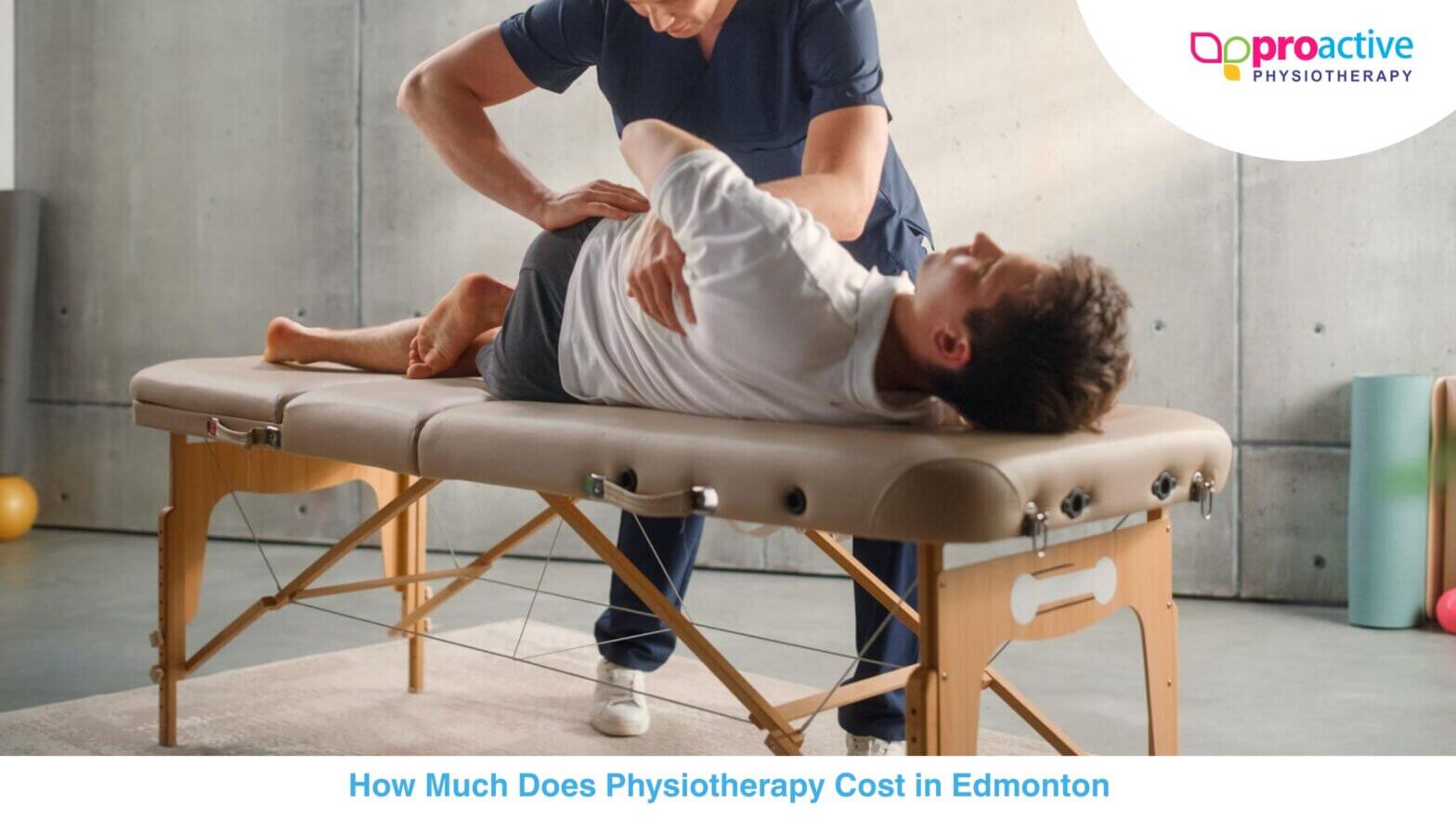Are you tired of shoulder pain interfering with your daily activities? It’s time to take control and find relief with the help of a physical therapist. Shoulder pain can be debilitating, affecting everything from simple tasks like reaching for a cup to more complex movements like throwing a ball. But fear not, because physiotherapy exercises targeting the trapezius and rotator cuff muscles in the upper arm are here to save the day!
Physiotherapy exercises are a game-changer for shoulder injuries and discomfort. Whether you’ve experienced an injury or overuse, these yoga-based treatments can make all the difference. Proper technique is crucial for effective rehabilitation, and that’s where a fitness assistant specializing in momentum physical therapy comes in.
No need to suffer in silence any longer – seek medical attention from a physical therapist and get started on your tailored treatment plan for trapezius and rotator cuff muscle injuries today. This section will provide all the information you need about physiotherapy exercises for shoulder pain. So let’s dive in and discover how these exercises can help you regain strength, flexibility, and live life without limitations!
Understanding Shoulder Muscle and Joint Problems: Causes and Symptoms
Shoulder injuries and muscle and joint problems can be caused by overuse, trauma, or age-related degeneration. These issues often result in pain, stiffness, limited range of motion, and weakness in the affected area. It is important to identify the underlying causes in order to develop an appropriate treatment plan that includes strengthening exercises for injury prevention and targeting sore spots.
Various Factors Contributing to Shoulder Muscle and Joint Problems
Shoulder injuries can arise from a combination of factors, including overuse and trauma. Overuse, especially among athletes or those who frequently engage in repetitive motions involving their shoulders, can cause muscle and joint problems. Trauma, such as a fall or direct impact to the shoulder area, can also lead to injuries. Age-related degeneration can contribute to the development of these issues. To prevent and treat shoulder injuries, it is important to focus on strengthening exercises for the main muscles.
Common Symptoms of Shoulder Muscle and Joint Problems
Identifying shoulder muscle and joint injuries requires recognizing their characteristic symptoms. The main muscles affected by these injuries are the main muscles in the shoulder. The most prevalent symptom of these injuries is pain, which may range from mild discomfort to severe agony depending on the underlying injury. Stiffness is another common symptom that limits the ability to move the shoulder freely. To address these issues, physio exercises can be helpful in rehabilitating the injured muscles and promoting recovery.
Individuals with shoulder muscle and joint injuries often experience limited range of motion. Physio exercises can help improve this. Simple tasks like reaching or lifting weights become challenging due to this limitation. Weakness in the affected area is also observed as muscles struggle to function normally. Consulting a physical therapist can provide guidance on how to manage and treat the injury.
Identifying Underlying Causes for Effective Treatment
To effectively treat shoulder muscle and joint problems, it is crucial to identify their underlying causes. This allows physical therapists and healthcare professionals to tailor treatment plans based on individual needs. By understanding what led to these injuries in the first place, targeted physio exercises can be implemented for better outcomes, focusing on the main muscles involved.
For instance, a shoulder injury may require rest periods followed by specific physiotherapy exercises targeting strengthening weak muscles or improving flexibility. A therapist might suggest a certain number of repetitions to track progress. Traumatic injuries might necessitate a combination of pain management techniques, such as medication or physical therapy.
Age-related degeneration may call for a multifaceted approach that includes exercises provided by a physical therapist to improve joint stability, lifestyle modifications, and possibly surgical interventions in severe cases of shoulder injuries. By addressing the root causes, healthcare providers can develop comprehensive treatment plans that address the specific needs of each patient with shoulder injury.
Top 10 Physiotherapy Exercises for Relieving Shoulder Pain and Tightness:
If you’re dealing with shoulder pain and tightness, incorporating physiotherapy exercises with a physical therapist into your routine can be a game-changer. These exercises are specifically designed to target the root causes of shoulder injuries, improve strength, flexibility, stability, and overall function of the shoulder joint. Here’s a comprehensive list of ten highly effective physiotherapy exercises that can help alleviate your shoulder pain and injuries.
1. Pendulum Swings:
Stand with one hand resting on a table or chair for support. Gently swing your affected arm back and forth like a pendulum. This exercise, recommended by physical therapists or physios, helps to loosen up the muscles around the shoulder joint. Remember to follow the step directions tip and do several repetitions.
2. Wall Climbs:
Stand facing a wall with your fingertips lightly touching it. Slowly walk your fingers up the wall as high as you comfortably can without pain. Then, walk them back down again. This exercise helps improve shoulder mobility and is recommended by physical therapists or physios during physical therapy sessions. It is an important step in the rehabilitation process.
3. External Rotation Stretch:
Lie on your side with a rolled-up towel under your upper arm for support during physio exercises for shoulder injuries. Hold a light dumbbell or resistance band in your hand and slowly rotate your arm outward away from your body while keeping your elbow at a 90-degree angle. This is a great way to rehabilitate shoulder injuries and can be done with minimal shoulder equipment.
4. Scapular Squeezes:
For a physio exercise that targets the muscles around the scapulae, sit or stand tall with good posture. Squeeze your shoulder blades together, as if trying to hold a pencil between them, for five seconds. Release and repeat this step several times to strengthen these muscles. This physical therapy tip provides step-by-step directions for effective repetitions.
5. Internal Rotation Stretch:
To stretch the front of your shoulder joint, follow these step-by-step directions: Stand next to an open doorway with one hand resting against the doorframe at waist level. This tip is recommended by physical therapists for effective physical therapy. Gently lean forward until you feel a stretch in the main muscles of your shoulder joint.
6. YTWL Exercises:
Lie face down on an exercise mat or bed with arms extended overhead forming letters Y, T, W, and L using light weights or resistance bands. This physical therapy exercise targets the muscles of the upper back and shoulders to improve posture and stability. It is a helpful tip for physio and can be done with step-by-step directions.
7. Isometric Shoulder External Rotation:
Hold a resistance band between your hands with elbows bent at a 90-degree angle to target the main muscles. Keeping your elbows tucked in at your sides, rotate your forearms outward against the band’s resistance for optimal repetitions and weight. Use this step-by-step directions tip to effectively work your muscles.
8. Sleeper Stretch:
Lie on your side with your affected arm resting on a rolled-up towel or pillow for support. Gently push down on the hand of your affected arm, stretching it towards the bed or floor, until you feel a mild stretch in the back of your shoulder. This exercise targets the main muscles in your shoulder and can be done following step-by-step directions from a physio. Repeat the exercise for several repetitions to maximize its benefits.
9. Prone Row:
To target your main muscles, lie face down on an incline bench or exercise ball with light dumbbells in each hand. Slowly lift the weights towards your chest while squeezing your shoulder blades together, then lower them back down. This step is great for building strength and can be beneficial for physio purposes. Aim for a few repetitions to maximize the benefits.
10. Standing Rows:
Stand tall holding a resistance band attached to a doorknob or sturdy object at waist height. Pull both ends of the band towards you, engaging your main muscles, and perform the exercise for the desired number of repetitions. Squeeze your shoulder blades together as you bring your elbows behind you, feeling the weight of the resistance band.
Exercise 1: Elbow Flexion and Assisted Shoulder Flexion
Elbow flexion, combined with assisted shoulder flexion, is a step exercise that improves range of motion in the shoulder joint. This exercise targets the muscles responsible for elbow flexion while providing assistance for raising the arm overhead. It can benefit individuals with difficulty lifting their arms due to pain or stiffness. The exercise involves repetitions, sets, and weight adjustments as needed.
Regularly practicing this exercise can lead to increased mobility and reduced discomfort in the shoulders, as it targets the main muscles in this area. By following these steps, you can perform the exercise with ease and reap its benefits. Make sure to choose an appropriate weight and perform the recommended number of repetitions for optimal results.

How to Perform Elbow Flexion and Assisted Shoulder Flexion:
- Sit or stand comfortably with your back straight and shoulders relaxed. This is the first step to properly engage the main muscles of your body while lifting weights. Make sure to complete multiple sets to maximize your workout.
- Hold a fitness assistant, such as a resistance band or towel, with both hands to add weight and increase repetitions. This step can help prevent shoulder injuries.
- Begin by bending your elbows, bringing your hands towards your chest, taking care to avoid any strain or risk of shoulder injuries. This step is crucial in preventing any potential shoulder injury while lifting weights.
- Incorporate the keywords: step, repetitions, weight, sets Step 1: Slowly raise your arms overhead while maintaining the bend in your elbows. This exercise can be done with or without weights. Aim for 10 repetitions per set.
- As you reach the highest point comfortable for you during each step, gently squeeze your shoulder blades together. This exercise can be done with varying weights, repetitions, and sets.
- Hold this position for a few seconds before slowly lowering your arms back down to the starting position. This step is important for building strength and endurance in your muscles. Aim for a certain number of repetitions and sets, gradually increasing the weight as you progress.
- Repeat this step for 10-15 repetitions, gradually increasing weight as you build strength.
Benefits of Elbow Flexion and Assisted Shoulder Flexion:
- Improved Range of Motion: This exercise involves performing a specific step to loosen up tight muscles and joints, enhancing flexibility in the shoulder joint. It is recommended to perform a certain number of repetitions and sets with a suitable weight for optimal results.
- By combining repetitions of elbow flexion with assisted shoulder flexion, you can strengthen multiple muscle groups including the biceps, deltoids, and trapezius muscles. This is an effective step in increasing muscle strength and can be done with different weights and sets.
- Regular practice of this exercise, involving repetitions, sets, and weight, can help alleviate pain associated with various shoulder conditions such as rotator cuff injuries or frozen shoulder syndrome.
- Enhanced Functionality: Increased range of motion and strengthened muscles from repetitions, sets and step contribute to improved performance in daily activities, sports, and other physical endeavors.
- The conditioning program includes repetitions and sets of elbow flexion and assisted shoulder flexion to improve overall upper body strength and mobility.
Remember to consult with a qualified physiotherapist or healthcare professional before starting any new exercise routine, especially if you have pre-existing shoulder conditions. They can provide personalized guidance and ensure that you are performing the exercises correctly to avoid any potential injury. It is important to follow the recommended repetitions and sets for optimal results.
Incorporating elbow flexion and assisted shoulder flexion into your physiotherapy routine can make a significant difference in managing shoulder pain and improving overall shoulder function. Stay consistent with your practice, listen to your body, and enjoy the benefits of increased mobility and reduced discomfort in your shoulders. Remember to focus on repetitions and sets during your exercises.
Exercise 2: External Rotation with Arm Abducted and Bentover Horizontal Abduction
The second exercise in our physiotherapy routine for shoulder pain is the External Rotation with Arm Abducted and Bentover Horizontal Abduction. This exercise focuses on strengthening the rotator cuff muscles through repetitions and sets, which are crucial for shoulder stability and mobility. By performing this exercise regularly, you can enhance your shoulder strength and prevent future injuries.
To perform the External Rotation with Arm Abducted, follow these steps for repetitions and sets.
- Stand upright with your injured arm at your side.
- Hold a light dumbbell or weight machine handle in your hand to perform repetitions.
- Bend your elbow to a 90-degree angle, while minimizing repetitions, keeping it close to your body.
- Lift your arm outwards while maintaining the 90-degree angle, rotating it away from your body to perform repetitions.
- Slowly lower your arm back to the starting position.
- Repeat this movement for a set number of repetitions.
This exercise specifically targets the infraspinatus muscle, one of the main muscles responsible for external rotation repetitions of the shoulder joint. By engaging this muscle through external rotation repetitions exercises, you can strengthen it and improve its function.
Now let’s move on to Bentover Horizontal Abduction:
- Stand facing a wall or sturdy object that allows you to lean against it comfortably.
- Bend forward at the hips until your upper body is parallel to the ground.
- Keep your injured arm relaxed and hanging down towards the floor.
- Begin by pulling your injured arm backward in a horizontal motion away from your body.
- Focus on squeezing your shoulder blades together as you perform this movement.
- Slowly return to the starting position and repeat for a set number of repetitions.
Bentover horizontal abduction helps improve shoulder stability by strengthening the posterior deltoid muscle along with other muscles responsible for pulling the arm backward.
Incorporating both external rotation with arm abducted and bentover horizontal abduction into your physiotherapy routine can provide numerous benefits. These exercises not only strengthen the rotator cuff and posterior deltoid muscles but also enhance shoulder stability, allowing you to perform daily activities without pain or discomfort.
Remember, it’s essential to use proper form and start with light weights or resistance. Gradually increase the intensity as your shoulder strength improves. If you experience any pain or discomfort during these exercises, consult with a physiotherapist or healthcare professional.
Exercise 3: Scapular Retraction/Protraction and Scapula Setting
Scapular retraction/protraction exercises are an essential component of physiotherapy for shoulder pain. These exercises specifically target the muscles responsible for controlling the movement of the shoulder blades. By practicing scapular retraction and protraction, individuals can improve their posture and reduce strain on the shoulders.
One important aspect of scapular exercises is scapula setting. This technique involves stabilizing the shoulder blades in a neutral position to promote proper alignment during movement. It helps ensure that the shoulders function optimally without unnecessary stress or discomfort.
Regular practice of these exercises can alleviate pain and restore optimal function in the shoulders. Let’s take a closer look at how scapular retraction/protraction and scapula setting can benefit you:
Scapular Retraction/Protraction Exercises
Scapular retraction refers to pulling your shoulder blades together towards your spine, while scapular protraction involves pushing them apart. These movements engage various muscles such as the rhomboids, trapezius, and serratus anterior.
To perform scapular retraction:
- Sit or stand with good posture.
- Relax your shoulders.
- Squeeze your shoulder blades together by pulling them towards your spine.
- Hold this position for a few seconds before releasing.
- Repeat for several sets.
To perform scapular protraction:
- Assume a comfortable seated or standing position.
- Start with relaxed shoulders.
- Push your shoulder blades apart by rounding your upper back slightly.
- Hold this position briefly before returning to neutral.
- Repeat for multiple sets.
By regularly practicing these exercises, you’ll strengthen the muscles responsible for maintaining proper shoulder blade positioning, leading to improved posture and reduced strain on your shoulders.
Scapula Setting Technique
Scapula setting is crucial in ensuring the stability and alignment of your shoulder blades during movement. It involves consciously positioning your shoulder blades in a neutral position, which is neither excessively protracted nor retracted.
To set your scapulae:
- Sit or stand with good posture.
- Relax your shoulders.
- Gently squeeze your shoulder blades together towards the spine without excessive tension.
- Maintain this position while performing other exercises or daily activities that involve arm movements.
Scapula setting helps create a solid foundation for proper shoulder mechanics, reducing the risk of injury and enhancing overall shoulder function.
Incorporating subscapularis stretching exercises into your routine can complement scapular retraction/protraction and scapula setting exercises, promoting flexibility and range of motion in the shoulders.
Remember, if you have recently undergone surgery or are experiencing severe pain, it is essential to consult with a physiotherapist before attempting any new exercises.
Exercise 4: Crossover Arm Stretch and Arm Across the Chest
Stretching is an essential component of any physiotherapy routine for shoulder pain. The crossover arm stretch and arm across the chest exercise are two effective stretches that target various muscles in the shoulder region. Incorporating these exercises into your routine can enhance flexibility, relieve tension, and promote relaxation in your shoulders.
The Crossover Arm Stretch
The crossover arm stretch is a simple yet effective exercise that helps stretch the muscles around your upper arms, chest, and upper back. Here’s how to perform it:
- Stand up straight with your feet shoulder-width apart.
- Extend one arm straight out to the side at shoulder height.
- Take your other arm and cross it over your body, placing your hand on the opposite shoulder.
- Gently pull the crossed arm towards you using the hand on your opposite shoulder.
- Hold this position for 15-30 seconds while feeling a gentle stretch in your shoulder.
- Repeat on the other side by switching arms.
By performing this exercise regularly, you can improve flexibility in the muscles surrounding your shoulders, reducing stiffness and discomfort.
Arm Across the Chest
The arm across the chest exercise specifically targets muscles involved in internal rotation of the shoulder joint. It helps increase mobility and range of motion in this area. Follow these steps to perform it:
- Stand or sit upright with good posture.
- Lift one arm straight out in front of you at shoulder level.
- Use your other hand to gently guide that extended arm across your chest.
- Stop when you feel a comfortable resistance or a mild stretch in your shoulder.
- Hold this position for 15-30 seconds before releasing slowly.
- Repeat on the other side by switching arms.
This exercise can be done anywhere without any equipment, making it convenient for home workouts or even during breaks at work.
Remember to perform these exercises with control and avoid any jerking or sudden movements. If you experience pain while performing them, stop immediately and consult a physiotherapist.
Incorporating the crossover arm stretch and arm across the chest exercise into your physiotherapy routine can provide significant relief for shoulder pain. These stretches target key muscles involved in shoulder movement, helping to improve flexibility and reduce discomfort. Remember to start slowly, gradually increasing the number of repetitions as you become more comfortable with the exercises.
So why wait? Give these stretches a try today and experience the benefits for yourself. Your shoulders will thank you!
FAQs
Q: How often should I perform these shoulder exercises?
It is generally recommended to perform these exercises 2-3 times a week. However, it is essential to listen to your body and adjust the frequency based on your individual needs and comfort level.
Q: Can I do these exercises at home without professional supervision?
While it is possible to perform these exercises at home, it is advisable to consult a physiotherapist or healthcare professional for proper guidance and assessment. They can ensure that you are performing the exercises correctly and tailor them to your specific condition.
Q: How long does it take to see results from these shoulder exercises?
The time frame for seeing results may vary depending on various factors such as the severity of your condition, consistency in performing the exercises, and adherence to other treatment modalities. It is important to be patient and persistent while incorporating these exercises into your routine.
Q: Are there any precautions I should take before starting these exercises?
Before starting any exercise regimen, it is crucial to consult with a healthcare professional or physiotherapist who can assess your condition and provide personalized recommendations. They can guide you on proper form, technique, and any precautions specific to your situation.
Q: Can I continue doing other physical activities while performing these shoulder exercises?
Engaging in other physical activities should be done cautiously while performing shoulder exercises. It is advisable to consult with a healthcare professional or physiotherapist who can provide guidance on which activities are safe and suitable for your condition.
Q: Will these shoulder exercises completely eliminate my pain?
These shoulder exercises are designed to help manage and alleviate shoulder pain; however, individual results may vary. It is important to maintain realistic expectations and seek appropriate medical advice if the pain persists or worsens.
Q: Can I combine these shoulder exercises with other forms of therapy?
Yes, combining these shoulder exercises with other forms of therapy such as massage, acupuncture, or chiropractic care may enhance the overall effectiveness of your treatment. It is recommended to consult with your healthcare professional to determine the best combination for your specific needs.
Achieving Pain Relief with Effective Shoulder Exercises:
In conclusion, incorporating physiotherapy exercises into your routine can be highly beneficial for relieving shoulder pain and tightness. By understanding the underlying causes and symptoms of shoulder muscle and joint problems, you can target specific areas to alleviate discomfort.
The top 10 physiotherapy exercises outlined in this article provide a range of movements that promote flexibility, strength, and stability in the shoulder region. From elbow flexion and assisted shoulder flexion to scapular retraction/protraction and crossover arm stretches, these exercises target different muscles and joints to address various issues.
It is important to remember that consistency is key when performing these exercises. Regularly engaging in these activities will not only help manage existing pain but also prevent future discomfort by improving overall shoulder health.
By following proper form and technique during these exercises, you can maximize their effectiveness while minimizing the risk of further injury. It is advisable to consult a qualified physiotherapist or healthcare professional before starting any exercise regimen to ensure it aligns with your specific needs and capabilities.
To achieve optimal results, it is recommended to combine these exercises with other treatment modalities such as rest, ice therapy, heat therapy, or medication if prescribed by a medical professional. Maintaining good posture throughout the day and avoiding activities that aggravate your shoulder pain can further support your recovery process.
Remember that everyone’s body is unique, so it may take time to find the right combination of exercises that work best for you. Be patient with yourself as you explore different techniques and listen to your body’s signals. If an exercise causes excessive pain or discomfort, modify or discontinue it immediately.
Incorporating regular physiotherapy exercises into your routine not only helps relieve shoulder pain but also promotes overall well-being. Take charge of your health by implementing these exercises consistently and seeking guidance from professionals when needed.




